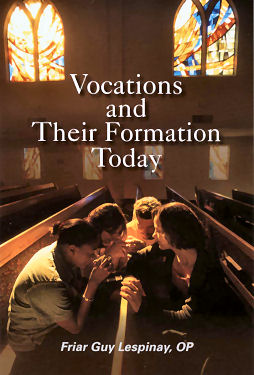
|
Posted February 5, 2010
Book: Vocations and Their Formation Today Author: Friar Guy Lespinay, OP St. Pauls. Staten Island, NY. 2009. Pp. 175 An Excerpt from the Jacket:
An Excerpt from the Book: What are young people expecting from us? They are better placed than I am to answer the question. But I dare to venture and share my intuitions with you. They want to be trusted by being given responsibilities, taking into consideration their capacity to assume them. Let us avoid training submissive individuals. There is often a false idea of obedience. Those in charge of forming others should not be “adoptive” or “possessive” parents of their spiritual offsprings or little dictators on the spot who love to exert their power. We must be willing to take some risks, knowing that they may make mistakes and by doing so carve out their own path. The experience will mature them. . . .Cardinal Jean-Claude Turcotte, archbishop of Montreal, said at the time of the canonization of St. Marcellin Champagnat: To love is not to be lenient. It is to be able to be demanding while remaining sympathetic. It is to be able to give self-assurance. It is to believe that in any human being there is a richness which needs to be developed. To love is also to have time — much time — to listen. It is to be able to be patient. It is to be able to encourage rather than to criticize. The canonization of Marcellin Champagnat proclaims with force that today’s young people, who undoubtedly need to educate themselves and undoubtedly need diplomas, need also undoubtedly to be loved. It is impossible to work at their education without loving them. Table of Contents: 1. The call to religious life 2. The signs accompanying the choice of religious life 3. Who are the young today? 4. Accompanying vocations 5. Pre-formation 6. Adaptation to religious life 7. Persons in charge of formation and of the community of formation 8. Evaluation 9. Pastoral work with vocations |
|
